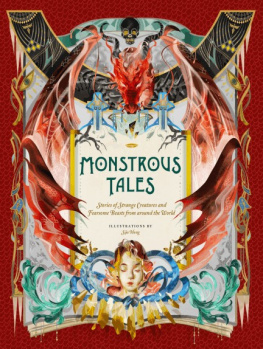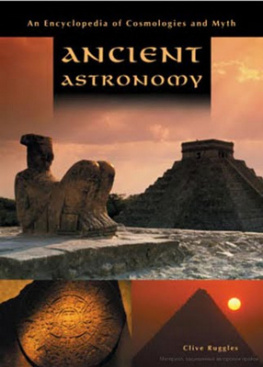
Also by THERESA BANE
AND FROM MCFARLAND
Encyclopedia of Spirits and Ghosts in World Mythology (2016)
Encyclopedia of Giants and Humanoids in Myth, Legend and Folklore (2016)
Encyclopedia of Imaginary and Mythical Places (2014)
Encyclopedia of Fairies in World Folklore and Mythology (2013)
Encyclopedia of Demons in World Religions and Cultures (2012)
Encyclopedia of Vampire Mythology (2010)
LIBRARY OF CONGRESS CATALOGUING DATA ARE AVAILABLE
BRITISH LIBRARY CATALOGUING DATA ARE AVAILABLE
e-ISBN: 978-1-4766-2268-2
2016 Theresa Bane. All rights reserved
No part of this book may be reproduced or transmitted in any form or by any means, electronic or mechanical, including photocopying or recording, or by any information storage and retrieval system, without permission in writing from the publisher.
McFarland & Company, Inc., Publishers
Box 611, Jefferson, North Carolina 28640
www.mcfarlandpub.com
To Athena, my beloved canine companion.
You are where abomination and fairy hound meet.
Preface
To date this encyclopedic work on mythological creatures is my largest undertaking, written with the needs of other authors and researchers in mind. Numerous books already cover the subject of folkloric, imaginary, and mythological creatures, but I believe this one to be unique in its completeness and the breadth of its sources. I was determined to include every possible creature, leaving no culture, religion, or time period untouched.
This volume does not contain any fictional creationsthose animals invented purely from the imagination of an author for a work of strict fiction, such as the Ravenous Bugblatter Beast of Traal from the late Douglas Adamss Hitchhikers Guide to the Galaxy. Although references to the universes most profoundly unintelligent animal are made commonly in some circles, it originated from a radio show turned novel turned TV show turned movie. The RBBoT is neither folkloric nor mythological but entirely fictional; it cannot be encountered in the most remote part of this (or any other) planet nor does it exist anywhere except in the fiction of the author who created it and the many works of Adams fan fiction circulating on the internet and convention circuits. No reasonable person is funding an expedition to look for one and to date, it has never been sighted nor has its blurry photograph been published anywhere I could discover.
Additionally, this book does not contain any cryptozoological animals or beings like the phantom kangaroos sighted in England, France, and throughout America. The kangaroo is a real animal, and although the idea of one hopping down a Parisian back alley or living in troops in the American west is delightful, interesting, and even possible, it is in all likelihood an urban legend. The overwhelming opportunities for evidence to be collected if these animals were present would be there for the taking; the fact that over a hundred years have passed and one has yet to be captured, dead or alive, is evidence enough for their lack of presence (but perhaps the flotilla of alligators in the sewers keep their number low). The Mothman, Springheel Jack, and their ilk are also not represented here. These beings are not cryptids, folkloric, nor mythological in origin; at best they are pop culture urban legends who come in and out of vogue as the media sees fit.
Also not included are the many extra-terrestrial species of aliens who abduct us, visit us, and make crop circles for our consideration. These beings from distant galaxies have been sighted and reported for many years, hundreds even, but their existence is akin to the aforementioned alligators in the sewers and phantom kangaroos. ETs are not a part of mythology although some religions assert their gods descended to earth in vehicles from the stars. If I am ever given the opportunity to write an encyclopedia of gods and goddesses, those beings may appear in that work.
Furthermore, at no point in the book do I ever speculate about what the creature could be or what the ancient author was probably looking upon. By following this strict guideline, the book is a far more useful research tool for authors and academics, as I do not pollute their thoughts with my interpretation of the material.
The goal of this work is to include as many mythological and folkloric creatures as I could discover so fellow researchers can utilize it as their initial go to book; hopefully they will read their desired entry and get the information they seek or have an idea of how to begin their own research if they so desire. It is a nearly impossible task to include every mythological being ever imagined by man and to fully detail every nuance of its aspect and history, but I hope this book comes closer to achieving this goal than any before it.
Each entry contains the country of origin or the name of the people from which the creature originated. Wherever possible a physical description and preferred prey are included. Some entries also have a pronunciation of the name and summation of the mythological history of the creature included if one was attached. Naturally, some entries are longer than others, as some creatures were more fleshed out, so to speak, than others.
The entries are arranged in alphabetical order. Some authors have grouped the creatures by country or according to the six main classes of animals (amphibians, birds, fishes, invertebrates, mammals, and reptiles). This method leaves much to be desired; for instance, a creature may appear in the mythologies of many countries, as is the case with the DRAGON and the UNICORN, so there is no single geographical location by which to place it. Similarly, many chimerical creatures have physical descriptions containing features from two or more of the animal classes. For these reasons, I kept to the tried and true traditional alphabetical listing and method of collation. If a researcher wants to know what creatures hail from a specific country, there is an exhaustive index that will serve the purpose.
Over time the spellings of words change, as they do when a myth travels from country to country and is translated time and again. Because of this, some creatures names have many variant forms. All are included in the index to ensure access by any version of the name.
As some mythologies are older and more thoroughly explored than others, as is the case with Greek, Hindu, and Norse mythologies, many beings are entangled in one anothers stories. Words in SMALL CAPS signal that there is more to the story as well as where to find it cross referenced in the book.
The resources I utilized for this work were primarily other research books and academic articles written by my predecessors. I relied heavily on Google Books for access to the 19th century works as they are difficult to come by otherwise. Apart from my personal library made up of a lifetimes collection of books I also visited the many public and private libraries in the various cities and towns I have lived in over the years.
In conclusion, I would be remiss if I did not express my deep appreciation to those who assisted me with this commission: beta-readers and index assistants, Angela McGill, Pam Paarisi and Jeanie Bone; my morale officer Amedeo C. Falcone who would daily ask for reports on my progress and encourage me to soldier on; and especially my devoted and supporting husband, T. Glenn Bane, who enables me to pursue this career. Without this dedicated cadre of overworked individuals, this book would not have been possible.
Next page













